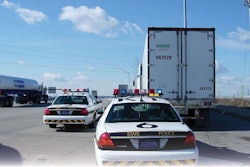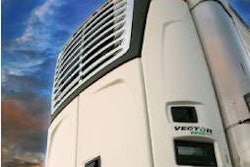Lexington, South Carolina
Maintained its no-layoff vow during the recession and emerged with an experienced foundation to capitalize on growing business levels.
Keeping ’em working
Southeastern’s commitment to its employees pays off
No trucking company was immune to the economic effects of the recent recession, including Southeastern Freight Lines, a regional less-than-truckload transportation services provider. But the Lexington, S.C.-based company believes its no-layoff policy may have helped it emerge with a stronger foundation than most. And as business levels rebounded in 2010, Southeastern said it had hired more than 900 additional employees.
The commitment to employees has enabled the company to build a culture of customer service excellence over its 60-year history, and Southeastern says everyone in the company takes pride that even in the midst of a challenging economy, it set performance records for customer service, reliability and employee safety.
“Not only were we successful at avoiding layoffs, but we also maintained wages for employees and kept all benefits in place,” says Mike Heaton, senior vice president. “Now as the economy recovers and orders increase, we have experienced employees ready to serve our customers and maintain our high standards.”
In addition, Heaton says Southeastern only is hiring about 900 people instead of the many more that it would have had to hire and train if it had laid off employees. While remaining conservatively optimistic, Southeastern is finalizing shipment projections for this year and preparing to order new equipment and expand facilities that need additional capacity to support growing business activities.
No pink slips
When the economy began to erode in 2008, Southeastern formed a “Keep Our People Working” task force to maintain its no-layoff commitment. The task force developed strategies for each service center with goals of keeping all employees working and maintaining all benefits and wage levels.
From reducing costs for outsourced services to refurbishing trucks instead of buying new ones, the task force successfully found creative ways to carry out its mandate. For example, an hourly rate system was adopted temporarily in which companies could lease a truck and a driver. Employees also were put to work in other roles, such as drivers working in the maintenance shop to refurbish trailers and perform other maintenance work.
Although costs were cut, Southeastern says it was able to improve its service and safety standards. Last year the company saw the lowest accidents per million miles and the lowest total injuries per 200,000 hours in the past decade. Southeastern also continued to raise numerous performance benchmarks, including transit time, shipments per claim, invoicing accuracy, pickup-and-delivery cost ratio and dock efficiency.

Southeastern Freight Lines President W.T. Cassels III (left) and W.T. Cassels Jr., chairman, continue to build on the company’s 60-year history of customer service excellence.
“I am very proud of what Southeastern has been able to accomplish amid the economic challenges that our customers and the entire economy faced during the recession,” Heaton says. “Our dedicated employees make this all possible, and it is our commitment to them that has put us at a great advantage as we look to begin our largest wave of hiring since 2006.”
Ready for growth
To further improve efficiency and provide room for future growth, Southeastern earlier this year opened a second service center in Charlotte, N.C., in response to growing business in the region. The new facility has 123 doors and a full maintenance shop, providing additional transportation capacity for the region and Charlotte’s growing south side. The ability to traffic freight through two locations in areas with heavy traffic congestion helps maintain on-time delivery standards and other measures of efficiency.
Last year, the company expanded its service center in Savannah, Ga., with the addition of 20 freight doors, boosting the total to 58. Also last year, Southeastern began offering next-day service between its Oklahoma City service center and its facility in Odessa, Texas, allowing the company to provide overnight service for customers who ship or receive in this lane. “Our customers, especially those in the oil field market, have requested next-day service, and now that the economic state of the oil business is improving, we’re positioned to fulfill their needs,” says Dean Baker, regional vice president of sales.
Southeastern earlier this year launched a new subsidiary, Southeastern Logistics Solutions, to provide expedited service and multimodal transportation services through strategic capacity partnership. Initially, the primary focus for SLS is in the truckload service areas of dry van, temperature-controlled reefer, flatbed and intermodal rail.
SLS also will oversee and manage all expedited products that require partnership capacity outside of the Southeastern LTL network. The company says that over time, SLS will introduce cartage, drayage, air freight, residential delivery and import distribution services.
“We recognize that a number of our customers have additional needs for a partner with the ability to provide all modes of transportation, and we want to always be positioned to say ‘yes’ to their transportation needs regardless of service type,” says Tobin Cassels, president of Southeastern Freight Lines.
Closing the window
Southeastern’s commitment to customer service was further evident when it introduced its Estimated Time of Delivery (ETD) service feature last year. Southeastern says it now can estimate the delivery of a shipment within a two-hour window and provide this information to customers via the Internet, PDAs and mobile phones.
Previously, customers could visit various reports online to see that a shipment was out for delivery, but they had to call the service center to get an estimate of when the shipment would be delivered; this was usually a “guesstimate” of when the driver would be in the area based on experience. While not always accurate, this was the best that could be done given the technology available.
Southeastern says its new ETD feature is supported by the information technology investments the company has made over the past decade. Southeastern’s Synergy Routing System designs the most efficient route for freight delivery, taking into account customer addresses, appointment times and the fact that right turns are faster than left turns. Using this data and standard handling times associated with the volume of freight, Southeastern is able to develop a schedule of estimated delivery times. A plus/minus one-hour window is added to the computed delivery time to allow for traffic or customer delays.
Once a window of time is established, Southeastern’s Laser Dispatch System provides real-time data communications that show the actual route start time along with the arrival and departure times at each customer stop. This information corrects the original schedule, if necessary, and if a delay impacts the schedule outside the two-hour window, the system automatically adjusts the subsequent deliveries accordingly. The ETD then is displayed on the status report that can be viewed by the customer and service center associates.
“In today’s market, providing customers with the information they need when they need it is just as important as moving the freight,” says Braxton Vick, senior vice president of corporate planning and development. “By making the best use of our onboard computer technologies, satellite and terrestrial communications, geocoding tools, sophisticated software and the Internet, we are able to keep our customers updated with the most accurate information available.”
Innovators profiles carriers and fleets that have found innovative ways to overcome trucking’s challenges.
If you know a carrier that has displayed innovation, contact Jeff Crissey at [email protected] or 800-633-5953.












